Photography is an expansive art that is made up of various elements.
Understanding the relationships -wherever they exist- between those elements will deepen your knowledge and definitely make you more skilled at manipulating said elements to acheive your desired image outcome. One of such relationships is THE EXPOSURE TRIANGLE.
What is exposure?
In photography, exposure is the amount of light that reaches your camera sensor or film.
It is an important contributor to how bright or dark your photographs appear. There are only two camera settings that affect the actual “luminous exposure” of an image: shutter speed and aperture. The third setting is the ISO. Together, these three make up what is referred to as the exposure/photographic triangle.
Definitively, the exposure triangle visibly explains the relationship between these three elements. They work together to produce a photo that is properly exposed.
For any given exposure, if one of the three variables change, you must adjust one (or both) of the others in the opposite direction. For example, if you decide to decrease your shutter speed by two stops, you will need to increase your aperture or ISO by two stops. You could also change both aperture and ISO by one stop with the same effect.
For many starting out in photography, the relationship between aperture, shutter speed, and ISO can be confusing. So, let's attempt to clear it up by defining the terms.
SHUTTER SPEED
This refers to the amount of time the shutter of the camera is open, thereby exposing the sensor to light. It is measured in seconds(S) e.g 1/3000s, 1/1500s, 1/750s, 1/500s, 1/250s....2s, 4s, 8s and so on.
The longer the shutter speed, the more light the camera sensor will capture and the longer the final exposure will be. On the other hand, the shorter the shutter speed, the less light that will hit the sensor, so the final image will be less exposed. In addition, another thing to consider regarding shutter speed is MOTION. A faster/shorter shutter speed does a better job freezing motion in a photo than a slower/longer shutter speed.
For example, if you are to take a picture of a running athlete, a faster shutter speed will capture a clear image of the athlete, while a slower/longer shutter speed will likely produce a blurry image due to the motion of the athlete.
APERTURE
When you press the shutter button to take a photo, the camera opens up a hole – the aperture – inside the lens.
How much light falls on the sensor depends on how big that opening is. It’s like how our pupils shrink to limit the amount of light that gets into our eyes. Also, in the dim light, our pupils get large to let in as much light as possible and increase how much we can see. Aperture is referenced in terms of f-stops, which look like this: f/2.8, f/4, f/5.6, f/8, f/11, f/16, f/22. A small f-stop (f/2.8) actually means a large hole, and a big f-stop (f/22) is a small hole (hope you can see the inverse proportionality).
Aperture also controls how much of the scene is in focus. This is called the DEPTH OF FIELD (DoF). A deep depth of field (achieved with larger f-stop numbers) means that more of the scene is sharp and in focus while a shallow depth of field (achieved with smaller f-stop numbers) means only some of the scene is in focus. A wider aperture, such as f/2.8 will create a shallower depth of field than a narrower aperture like f/22. At f/22, more of the scene will be in focus, but f/2.8 might give you a beautifully blurred background (bokeh). Generally, as the aperture narrows, the depth of field deepens, and the background blur disappears.
ISO
The ISO setting controls how sensitive your camera’s sensor is to light.
It brightens your photos, but it is not part of your “luminous exposure,” since it does not affect the amount of light that reaches your camera sensor (the definition of exposure). Instead, it merely brightens a photo in-camera after your sensor has already been exposed to the light - it artificially makes your photos brighter. ISO is measured in whole numbers e.g 50, 100, 200, 400, 800. Increasing by a stop brightens while reducing by one stop darkens. ISO is increased or decreased according to the amout of light present. If you're shooting in the daylight, the base ISO(usually 100) is enough to shoot with. In darker situations, you'd have to increase your ISO by a few stops. But increasing ISO is not all good news. Higher ISO values tend to create the 'grainy effect' in photos, otherwise know as 'noise'. This means you have to increase ISO when absolutely necessary(in cases where manipulating your shutter speed and aperture will not result in a bright enough photo)
PUTTING IT ALL TOGETHER


Consider this example:
Imagine you’re shooting your dog running around in the park during bright daylight. Your ISO is 100, shutter speed 1/500, and aperture f8.
Your camera’s exposure value (EV) is where you want it to be, yet you’re unhappy with the blurriness of the dog and decide to decrease/halve the shutter speed by 2 stops – from 1/500 to 1/2000 (from 1/500 to 1/1000 then 1/2000). Can you guess what effect that might have on your pictures? Your image will get darker because you increased the speed of the shutter, reducing the light hitting the sensor. In that case, you must compensate for the loss of light by either:
a) increasing aperture 2 stops – from f/8 to f/4,
b) increasing ISO 2 stops – from 100 to 400, or
c) increasing both aperture and ISO by 1 stop – from f/8 to f5.6 and from 100 to 200, respectively.
SOME OTHER THINGS YOU NEED TO KNOW
▪️STOPS
In photography, a stop refers to the doubling or halving of the amount of light that makes up an exposure and is a way to measure the amount of light hitting the sensor. Each photo that we take requires a certain quantity of light to expose it correctly. Adding a stop of light by doubling the exposure(e.g moving from ISO 100 to ISO 200, or moving from 1/30s to 1/15s)will brighten an underexposed image. Conversely, decreasing an exposure by one stop (halving the amount of light) will darken an overexposed image.
▪️HISTOGRAM
The histogram is a digital graph that shows the distribution of light tones in an image, with highlights (whites) on the right hand side and shadows (blacks) on the left hand other. When you take an overexposed image, there will be a lot of whites in the scene and the histogram graph will move across more to the right hand side. When you take an underexposed image, the histogram will move across more to the left.
In conclusion;
Juggling all three elements may seem tedious at first, but with constant practice, it'll get easier and you'll come to appreciate the importance of understanding the exposure triangle.
So, start practicing. Embrace the initial trial and error, always consider the trade offs when tweaking the elements and soon, you’ll be taking photos that look just the way you want them to.
Monthly Theme
Our theme, at Shutter Junkies, for this month was Tech
Here are a few pictures taken by some of our members:
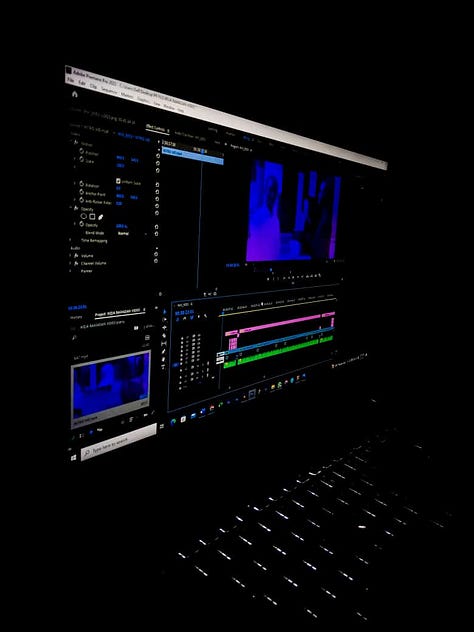
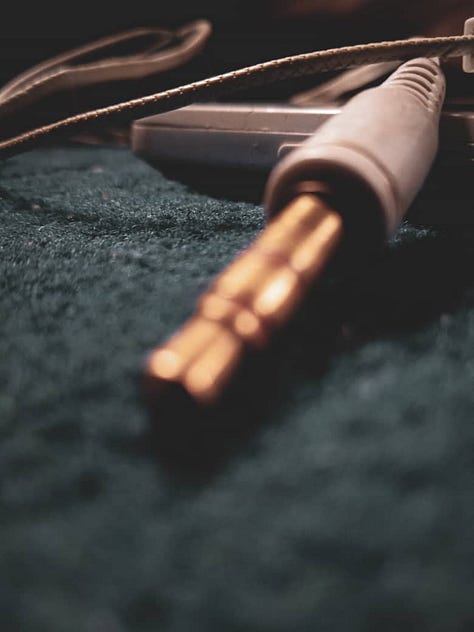

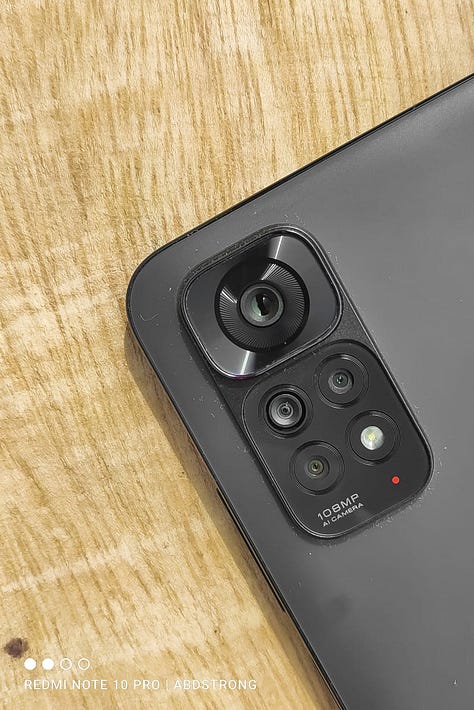
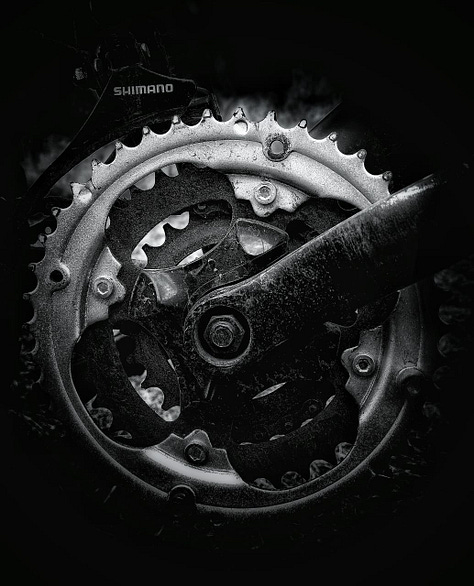


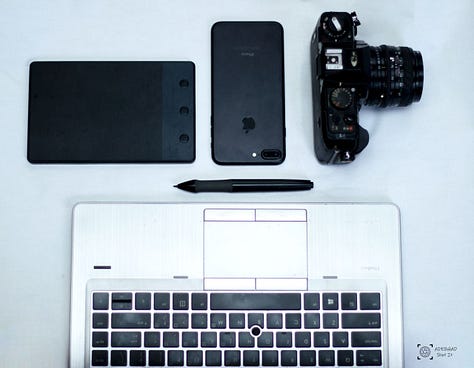
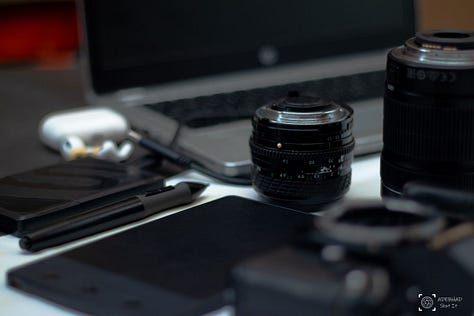
Want to join Shutter Junkies? A community of photographers who would love to critique your work and give advice on how to make the image better. Reach out to us on our social media and you’d get all the information you need.
✍️Mighty, O.








Fascinating read on the exposure triangle! Thanks for shedding light on this crucial aspect of photography!😁